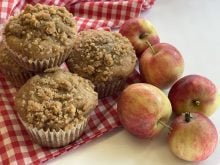In Canada, we can expect to see more nutritional information on food labels.
A label outlining the food’s nutritional information will soon be mandatory on nearly all food packages sold in Canada. Currently, nutrition labeling is voluntary.
The lack of nutritional information on food labels is something we “snowbirds” have missed, after returning to Canada each spring from the United States. There, nutritional information is on all food labels, with few exceptions. It is also given in easy-to-calculate proportions such as one slice or one cup, rather than in weights or per serving. It is great to know Canada will also have this valuable consumer information.
Read Also

Alberta honey business ‘thrives’ despite bumpy beginnings
Thrive Honey showcases its honey production in market where Alberta produces 40 per cent of all honey produced in the country
We at TEAM and many others from across Canada have answered surveys seeking advice on what consumers would like to see on food labels. We are told the new labels will include information on calories, all types of fats, cholesterol, sodium, carbohydrates, fibre, sugar, protein, vitamin A, vitamin C, calcium and iron.
Small businesses, restaurants and sellers of fresh fruit and vegetables will be excused from the program.
Final regulations for the new program are expected to be in place by 2001, but the new labels will likely start showing up in the next few months. The government is giving the industry two years to fully implement the changes. There will also be public education programs to help consumers understand what is on the labels.
More for your gas dollar
Everywhere the conversation is about the price of gas. We are comparing gas prices from one town or gas station to another and complaining about the high cost. While we may feel helpless about changing the price, we can control the amount of gas we use.
The Canadian Automobile Association and Natural Resources Canada give the following tips for conserving gasoline.
- Keep your engine well tuned.
- Check the oil level to be sure the engine is lubricated properly.
- Use regular fuel unless premium fuel is recommended by the vehicle manufacturer.
- Check tire pressure regularly, especially after there has been a sharp drop in temperature.
- Turn the car off when it is stopped. Ten seconds of idling uses more fuel than restarting the engine. You only need to idle your car 10 seconds in warm weather and not more than five minutes in cold weather.
- Install a block heater for easier starting, fewer emissions and less need for idling.
- Using an air conditioner in stop-and-go traffic can increase fuel consumption by as much as 20 percent. Open windows can be a fuel-saving alternative to air conditioning at low city speeds. However, at highway speeds open windows increase drag and increase fuel consumption.
- Aggressive driving saves little time but increases fuel consumption and emissions. Tests show that jackrabbit starts and hard braking cut travel time by four percent but increase fuel consumption 39 percent. Some toxic emissions are more than five times higher.
- Remove ski racks and roof racks when not in use. They increase a vehicle’s air drag.
Recipe found
J. R., Arborfield, Sask., wrote looking for a conga square recipe. I’m happy to report that I did find a recipe, as you describe, in American Cooks, The General Federation of Women’s Clubs Cookbook, published by Putnam’s Sons and edited by Ann Seranne, l967.
Conga bars
- 2/3 cup melted butter or margarine 150 mL
- 2 cups brown sugar 500 mL
- 3 eggs
- 1 teaspoon vanilla 5 mL
- 23/4 cups flour 675 mL
- 21/2 teaspoons baking powder 12 mL
- 1/2 teaspoon salt 2 mL
- 1 cup chopped walnuts 250 mL
- 1 pkg. (6 oz) semi-sweet chocolate pieces 170 g
- Preheat oven to 350 F (180 C). Grease 151/2 x 101/2 x 1 inch (39 x 26 x 2 cm) jelly roll pan.
- Melt butter or margarine in a mixing bowl. Add sugar. Stir until dissolved. Add eggs, one at a time, beating well after each addition.
- Beat in vanilla. Add flour, baking powder and salt, beating well until smooth. Stir in walnuts and chocolate. Spread in pan.
- Bake for 25 to 30 minutes. Cool, cut into 31/2 x 2 inch (9 x 5 cm) bars. Makes 24.
Sollenberry seed?
Dear TEAM: Where can I get sollenberry seed? (I’m not sure this spelling is correct.) My mom and her friend both recall their mothers having sollenberry in their gardens and making jam with it. Someone else she spoke to seems to remember it growing in the wild. Any help on this from you or your readers would be greatly appreciated. – S.H., Carragana, Sask.
Dear S.H.: Sollenberry seed, as you spelled it, is not known to seed suppliers or the Garden Line at the University of Saskatchewan. I also checked the internet with no luck.
The Garden Line would like more information about the kind of plant it was. With a description, the staff may be able to come up with the plant’s real name.
Phone the Garden Line at 306-966-5865. It is open over the winter months as well as in the summer.
Reader help needed
Dear TEAM: Last year there was a recipe for making tomato ketchup. I have misplaced mine and would appreciate another, if possible. I used this recipe and really like the flavor. – R.S., Islay, Alta.
Dear R.S.: I could not find the recipe you request but here is another that is easy to make. This ketchup is less sweet and has a fresher tomato flavor than commercial ketchups. It adds zest to casseroles, soups and meat loaves.
The recipe suggests plum tomatoes because they are less juicy and more meaty. I used peeled and frozen tomatoes to try in this recipe, as my tomatoes are all put away. It worked fine and the ketchup is tasty.
Blender ketchup
- 7 cups chopped peeled plum tomatoes, 1.75 L (about 4 pounds/2 kg)
- 1/2 cup chopped onion 125 mL
- 1/2 cup sweet red pepper 125 mL
- 2/3 cup vinegar, cider or white 150 mL
- 1/4 cup granulated sugar 50 mL
- 2 teaspoons pickling salt 10 mL
- 1 cinnamon stick, 2 inches/5 cm long
- 1/2 teaspoon each of whole allspice, whole cloves, peppercorns 2 mL
- 1 bay leaf
- Combine tomatoes, onion and red pepper in a blender or food processor and process until smooth. Remove to a large saucepan.
- Bring to a boil over high heat, reduce heat and boil gently, uncovered, for 30 minutes. Add vinegar, sugar and salt. Tie cinnamon, allspice, cloves, peppercorns and bay leaf in cheesecloth and add to saucepan.
- Return to a boil and boil gently, uncovered, stirring frequently, until volume is reduced by half or until mixture rounds up on a spoon without separation, about 1 1/2 hours. Remove cheesecloth bag.
- Remove hot jars from canner and ladle ketchup into jars to within 1/2 inch (one cm) of rim (headspace).
- Place jars in boiling water canner and adjust water to cover jars by one inch (2.5 cm).
- Cover canner and return water to a boil. Begin timing when water returns to a boil. Process for 15 minutes for half-pint (250 mL) and pint (500 mL) jars.
Makes about three cups (750 mL).
Source: More Put A Lid On It by Ellie Topp & Margaret Howard, published by Macmillan Canada, l999, is a small-batch preserving cookbook. The new version with up-to-date safe preserving techniques and recipes costs $24.95 at bookstores.
Narrow 63 snap lids
We have a request from S.K., Waskatenau, Alta., asking where to get the narrow 63 snap lids.
A call to Bernardin told me it is no longer making the 63 narrow-mouth lids.
You might find some old stock in a store that sells preserving supplies or at garage sales. Would any of our readers have snap lids they won’t be needing?
















